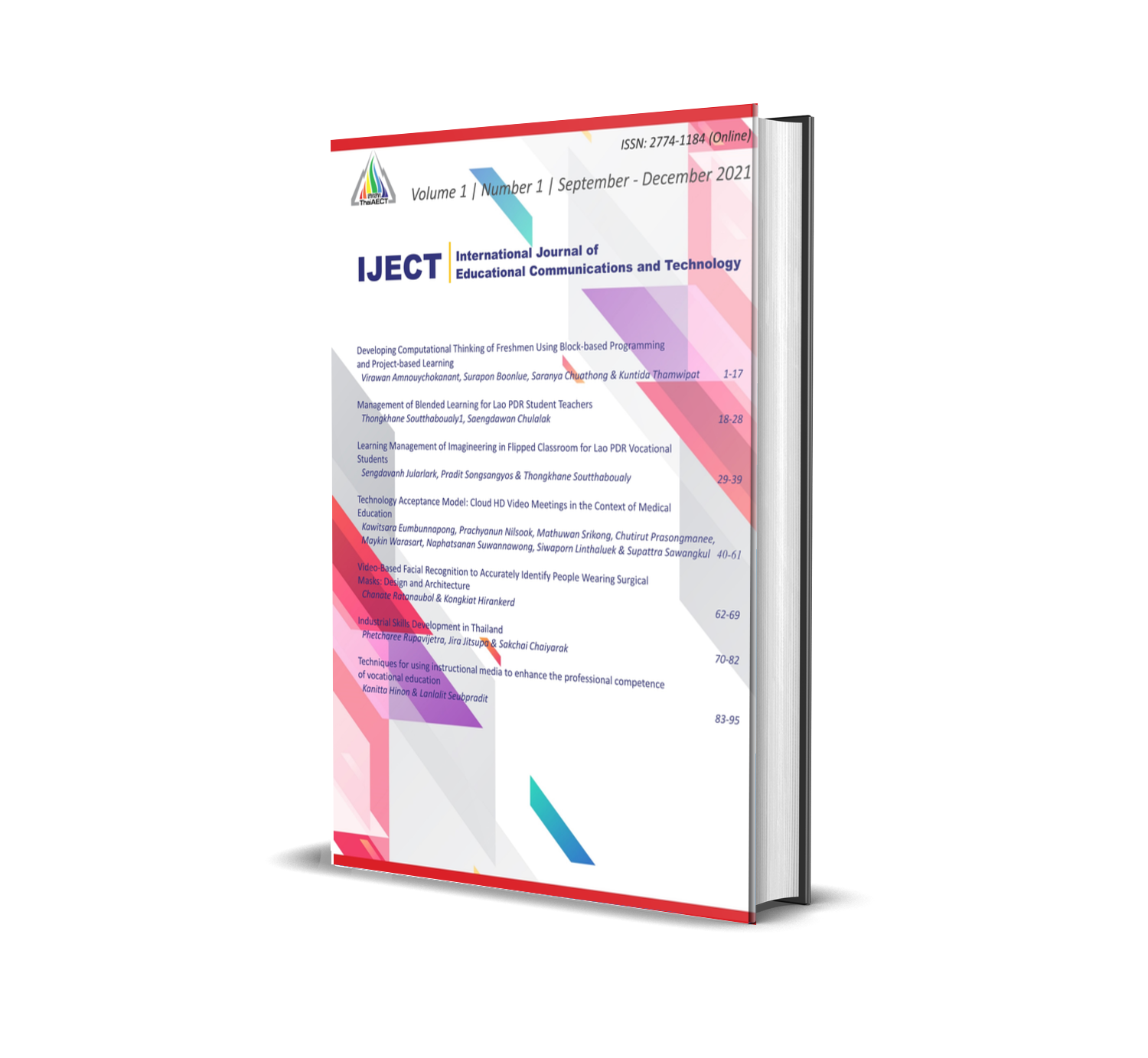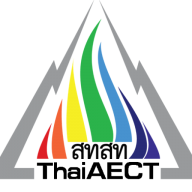Management of Blended Learning for Lao PDR Student Teachers
Keywords:
Lao PDR’s Teacher Training Colleges, Blended Learning, Face-to-Face Learning, Online TeachingAbstract
Blended learning is a popularized approach of education that utilizes and combines in-class learning with online class learning, an alternative for learning management in schools in Lao People’s Democratic Republic. This article will be a study of the blended learning concept as a guideline in adaptation for undergraduate students at teacher colleges in Lao PDR. The researcher had studied relevant concepts and theories of blended learning, active learning, and online learning in order to adapt these concepts in the learning management or as a guideline for further studies to promote more diverse learning approaches and studentcentered learning. This will help learners to be able to access to technology for learning by utilizing benefits of blended learning, which combines active learning and cloud-based learning, to aid learners in self-learning through the learning management technology in order to attain learning achievement and digital skills that are important for learners in 21st century, a society of digital learning.
References
Ambrose, S, A., Bridges, M, W., DiPietro, M., Lovett, M, C, Norman, MK., & Mayer, R, E. (2010). How Learning Works: 7 Research-based Principles for Smart Teaching . San Francisco , CA .: Jossey-Bass.
Carman, J, M. (2002). Blended Learning Design: Five Key Ingredients. Available from: http://blende d2010.pbworks.com/f/Carman.pdf.
Cormack, M, C., & Jones, D. (1998). Building a Web-Based Education System. New York: John Wiley & Sons,Inc. Dachakupt, P. (2007). 5C skills for develop Learning and teaching management integrated. Bangkok: Chulalongkorn University Printing House.
Fuller, L. (2021). Negotiating a New Blend in Blended Learning: Research Roots. Inquiry: The Journal of the Virginia Community Colleges, 24(1), 1-19. Retrieved from: https://commons.vccs.edu/inquiry/vol24/iss1/6.
Fisher, F, J. (2019). Defining personalized learning and blended learning: Is there a difference?, [Online]. Available: https://www.christenseninstitute.org/blog/definingpersonalized-learning-and-blended-learning-is-there-a-difference/.
Hasanah, H., & Malik, M, N. (2020). Blended learning in improving students’ critical thinking and communication skills at University. Cypriot Journal of Educational Sciences, 15(5), 1295–1306.
Horn, B, M., & Staker, H. (2015). Blenned Using DISRUPTIVE INNOVATION to Improve Shool. San Francisco,
Jossey-Bass. Jaitham, L. (2015). Blended Learning Case Study : Siriwang Wittayakarn School. (Master’s thesis). Bangkok. Mahanakorn University of Technology.
Kaplan, I., & Lewis, I. (2014) Promoting joint education in the creation of teachers, teaching methods. the United Nations Educational Bankok, (UNESCO).
Khammanee, T. (2017). 14 teaching methods for professional teachers , Bangkok: Chulalongkorn University publishing house.
Khammanee, T. (2018). Teaching Strategies: Knowledge for Effective Learning Process. 22th edition. Bangkok: Chulalongkorn University publishing house.
Ko, S., & Steve, R. (2017). Teaching online apractica Guide, 4th ed. New York: Routledge.
Martín-Martínez, L., Sainz, V., & Rodríguez-Legendre, F. (2020). Evaluation of a blended learning model for pre-service teachers. Knowledge Management & E-Learning, 12(2), 147–164. https://doi.org/10.34105/j.kmel.2020.12.008
Ministry of Planning and Investment Laos PDR, (2016). Vision 2030 and Ten-year SocioEconomic Development Strategy (2016-2025).
Minisity of Education, (2016). Vision to 2030, Strategy to 2025, and the VIII Five-Year Development Plan for Education and Sports, (2016-2020).
Moonkham, S., & Moonkham, A. (2002). 21 How to Manage Learning for Developing the Thinking System. 5th ed, Bangkok : Phapim.
Nasongkhla, J. (2018) Digital Learning Design, Bankok, Chulalongkorn University Printing House
Nasongkhla, J. (2018). Digital Learning Design. Bangkok: Chulalongkorn Press.
Nilsook, P. (2004). E-Learning. Academic Services Journal, Prince of Songkla University, 15(2-3), 1-6.
Nilsook, P., & Wannapiroun, P, (2013). Blended Learning Management : Blend Proportion, Journal Of Technical Education Development King Monkut's University Of Technology North Bangkok, 25(85), 31-36.
Panlak, K. (2018). The meeting of the administrators of the Teacher Training Institute 13th, laopatthananews 5 July 2010
Pramongudomrat, P., Methapatara., P & Stirayakorn, P, (2011). The Development of Teacher Training Curriculum with Blended Learning for Training Vocational Students in Career Practicum Subject, Technical Education Journal King Mongkut’s University of Technology North Bangkok, 2(2), 41
Sengmany, K.(2018). The meeting of the administrators of the Teacher Training Institute 13th, laopatthananews July, 5, 2018 (https://www.laophattananews.com/archives/36446)
Tantranont, K., Tuanrat, W., & Kaewthummanukul, T. (2018). The Application of a Blended Learning Approach to an Epidemiology Course, Journal Nursing, 45(1)100-109.
Viphavanh, P. (2011). The IX meeting of the pasaxon Lao party [Online]. Available: http://laos.cri.cn/341/2011/03/20/101s144346.htm.
Wu, H, E., Lin, C., Ou, Y., Liu, C., Wang, W & Chao, C. (2020). Advantages and Constraints of a Hybrid Model K-12 E-Learning Assistant Chatbot," in IEEE Access, 8(2020), 77788-77801, https://doi.org/10.1109/ACCESS.2020.2988252.
Wilmar Audye Cidral, A, W., Oliveira, T., Felice, D, M & Aparicio, M. (2018). E-learning success eterminants: Brazilian empirical study, Computers & Education, (122)2018, 273-290, https://doi.org/10.1016/j.compedu.2017.12.001.
Downloads
Published
How to Cite
Issue
Section
License
Copyright (c) 2021 International Journal of Educational Communications and Technology

This work is licensed under a Creative Commons Attribution-NonCommercial-NoDerivatives 4.0 International License.







